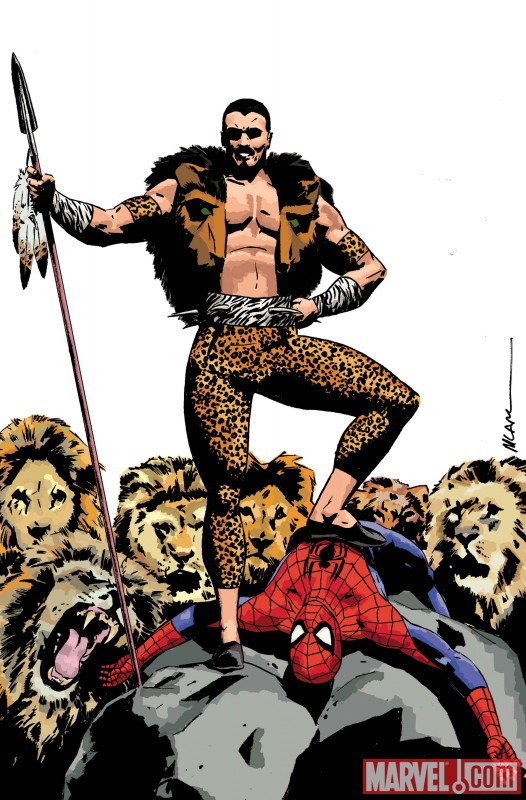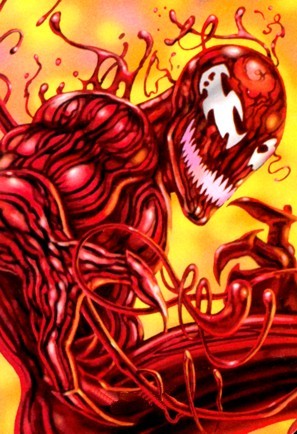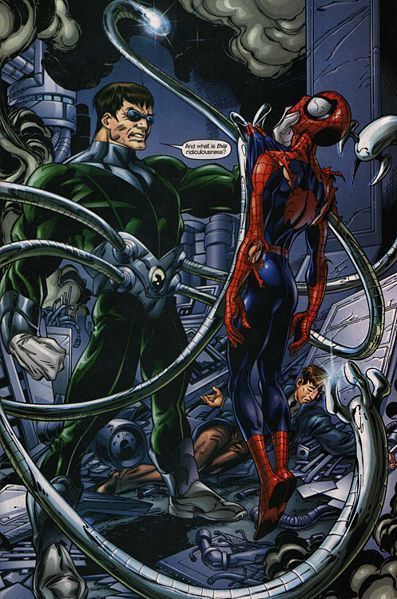Marvel Cinematic Universe
An Informative Essay by
Mitchell A. Quondam

The entire continuity is produced by Kevin Fiege. Fiege said in April 2010 that constructing a shared film universe:
“...is daunting but it's fun. It's never been done before and that's kind of the spirit everybody's taking it in. The other filmmakers aren't used to getting actors from other movies that other filmmakers have cast, certain plot lines that are connected or certain locations that are connected, but I think ... everyone was on board for it and thinks that it's fun. Primarily because we've always remained consistent saying that the movie that we are making comes first. All of the connective tissue, all of that stuff is fun and is going to be very important if you want it to be. If the fans want to look further and find connections, then they're there. There are a few big ones obviously, that hopefully the mainstream audience will able to follow as well. But ... the reason that all the filmmakers are on board is that their movies need to stand on their own. They need to have a fresh vision, a unique tone, and the fact that they can interconnect if you want to follow those breadcrumbs is a bonus”
The first step of the Universe, titled Phase 1, was to set up an Avengers movie by introducing the members in individual films with a single cast. The first of these was Iron Man, starring Robert Downey Jr. in the titular role, which began the Avengers Initiative with a cameo from Nick Fury (Samuel L. Jackson). Next was the Incredible Hulk played by Edward Norton, which was tied to Iron Man with a cameo by Robert Downey Jr. Iron Man 2 heavily featured members of S.H.I.E.L.D, a popular group in the Marvel Universe, and, along with Nick Fury, added Scarlett Johansson as the Black Widow. Thor featured Nick Fury, Agent Coulson (played by Clark Gregg, who appeared in Iron Man and its sequel) and Hawkeye, played by Jeremy Renner. Lastly, Captain America (played by Chris Evans) featured Fury, and a plot device from Thor called the Tesseract (known in the comics as the Cosmic Cube) and ended with the first teaser for the Avengers. The next Step is Phase 2, a series that will introduce the Avengers 2. Phase 3 has been announced, and will feature new heroes Ant-Man, Doctor Strange, and possibly a new Hulk film.
People Involved
Directors/Producers
Kevin Fiege - Producer
Jon Favreau –Director (Iron Man 1&2)
Shane Black – Director (Iron Man 3)
Joe Johnston – Director (Captain America: The First Avenger)
Louis Leterrier – Director (Incredible Hulk)
Joss Whedon – Director (The Avengers/Avengers 2)
Edgar Wright – Director (Ant-Man)
Kenneth Branagh – Director (Thor)
Alan Taylor – Director (Thor: The Dark World)
James Gunn – Director (Guardians of the Galaxy)
Anthony & Joe Russo – Directors (Captain America: the Winter Soldier)
Cast
Iron Man – Robert Downey jr.
Thor – Chris Hemsworth
Captain America – Chris Evans
Bruce Banner/Hulk – Mark Ruffalo (previously Edward Norton)
Black Widow – Scarlett Johansson
Hawkeye – Jeremy Renner
Nick Fury – Samuel L. Jackson
Loki – Tom Hiddleston
War Machine – Don Cheadle (previously Terrance Howard)
Red Skull – Hugo Weaving
Iron Monger – Jeff Bridges
Whiplash/Crimson Dynamo – Mickey Rourke
The Mandarin – Ben Kingsley
Bucky/Winter Soldier – Sebastian Stan
Released Films (In order of their release)
Iron Man
The Incredible Hulk
Iron Man 2
Thor
Captain America
The Avengers
Upcoming Films (In order of their release)
Iron Man 3
Thor: The Dark World
Captian America: The Winter Soldier
Guardians of the Galaxy
The Avengers 2
Ant Man
Doctor Strange
A “Planet Hulk” film has been proposed before the release of…
The Avengers 3

Continuity Issues
There were only two casting issues in this continuity. The first was an Iron Man character named Rhodey AKA War Machine. Originally played by Terrance Howard, was replaced by Don Cheadle for Iron Man 2, and Cheadle will reprise his role in the future. The second recast was the Hulk. Edward Norton left the project and was replaced with Mark Ruffalo for the Avengers. For now, Ruffalo is also set to reprise his role in Avengers 2.
One of the issues often discussed is that Marvel does not own all of its products at the moment. Spider-Man currently resides at Sony, and Fox owns X-Men and Fantastic Four rights at the moment. This deal includes all of their villains. This causes issues as many heroes have common enemies. For example, Iron Man and Spider-Man both have Norman Osborn as a villain. In the comics he retired the Green Goblin moniker and rebranded himself Iron Patriot, and was a popular Iron Man villain for a long time. Likewise, Fantastic Four villain Galactus is an occasional foe of the Avengers.
In October 2012, Lauren Shuler Donner, the producer of 20th Century Fox's X-Men film series, expressed interest in having the X-Men characters appear in the Marvel Cinematic Universe. Shuler Donner said, "I would love it. I personally have close ties to Marvel because of Kevin Feige, because Kevin worked for me. But to take our characters and mingle them in the way that they were written, yeah, absolutely." Mark Millar, who was hired in September 2012 to consult on all of Fox's future Marvel films, expressed similar sentiments in an interview, saying "Fox have said that they want to build a cohesive universe and I’d personally like this to work in complement to the Marvel one. It would be cool if these universes didn’t contradict each other so if you went to see Spidey, The Avengers, the X-Men, etc, as a viewer you would have no idea that all three are coming from different studios. I’d love to make it look like they’re all just happening in one place."

A minor crossover almost took place in the Avengers. Marvel Studios got permission from Sony Pictures to use the Oscorp building, a major location form the Amazing Spider-Man franchise. The building would have appeared in the skyline of Marvel’s New York, but unfortunately the rendering of the skyline was completed before the Oscorp building was out of the design stage. Also, as of October 2012, there are currently works of a short-term trade, where Fox will briefly hold the rights to Daredevil, and in return Marvel Studios receives the rights to Galactus and the Silver Surfer.
When Marc Webb, director of the Amazing Spider-Man was asked about expanding his Spider-Man universe over the course of several Spider-Man related movies, he replied “Think bigger” leading many to believe that he is trying to tie his Spider-Man, played by Andrew Garfield, into the Marvel Universe.
Proposals by Marvel
The following films have been proposed by Marvel, but have not begun writing or production yet:

Black Panther Power Pack
Cable Ka-Zar
Heroes for Hire Iron Fist
Luke Cage solo Nighthawk
Daredevil reboot Vision
Cloak and Dagger Doctor Strange
Dazzler










